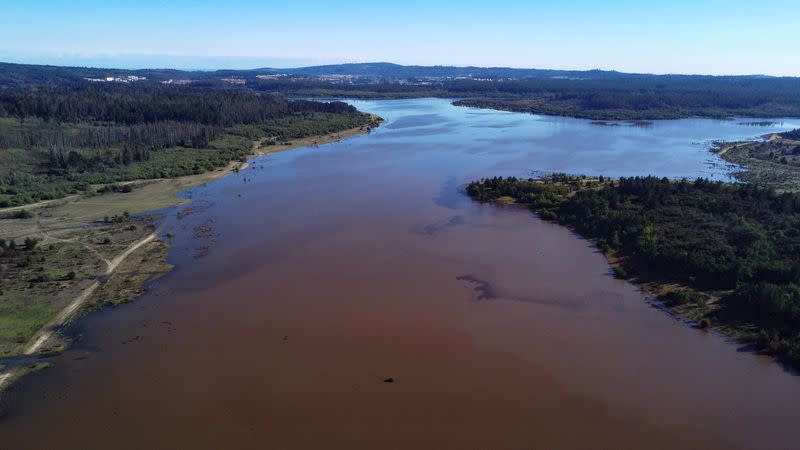Drought-hit lakes in Chile come back to life after downpours
By Rodrigo Gutierrez
SANTIAGO (Reuters) - Recent torrential rains in Chile have brought back to life - for now at least - reservoirs and lagoons that had all but dried up after years of drought, with dramatic images of cracked lake beds replaced by mirror-like still waters.
A severe years-long drought had decimated water supplies and hit local industries from mining to agriculture and bees in the Andean nation, while exacerbating tensions over water use.
The Aculeo Lagoon became a symbol of the crisis, as dead cattle and fish carcasses lay on its cracked and dry surface where there had once been a huge body of water. That's now dramatically refilled.
"The water is alive," Gloria Contreras, manager of a campsite in the area, told Reuters. "With the drought of the lagoon, many jobs were lost. But now that's changed, everything is reactivated - businesses, even the smallest vendors."
The recent rains that have refilled the lakes and seen snow dumped on bare mountainsides in the Andes, damaged hundreds of homes and left one person dead.
But the water has meant that other lagoons like Lake Peñuelas, an important water source for tourist coastal town Valparaíso that had dried up to a "puddle," has recovered substantially.
"It's been more than 20 years since we saw the lake like this, it's beautiful," said Eduardo Torres, a resident in the area of the nature reserve.
Experts, however, believe that recent rains won't make up for the decade-long drought. A recent El Niño weather pattern brought low-pressure storms from the Pacific, heralding strong rains during the Southern Hemisphere winter, replenishing aquifers and covering the Andes mountains with snow.
But a new La Nina is expected, meaning drier weather.
"The central zone of Chile needs at least three, four or five years of normal and intense rainfall to recharge the aquifers fully," said Patricio González, agro-climatologist at the southern University of Talca.
"Only then reservoirs could return to normal levels," he said.
Alex Godoy, director of the Center for Research in Sustainability at Universidad del Desarrollo, said the weather outlook ahead was not positive in terms of precipitation.
"The most likely result is no more rainfall," said Godoy. "We should expect an increase in the drought between now and the next two or three seasons."
(Reporting by Rodrigo Gutierrez and Ivan Albarado; Writing by Fabian Cambero and Noelle Harff; Editing by Adam Jourdan and Sandra Maler)






